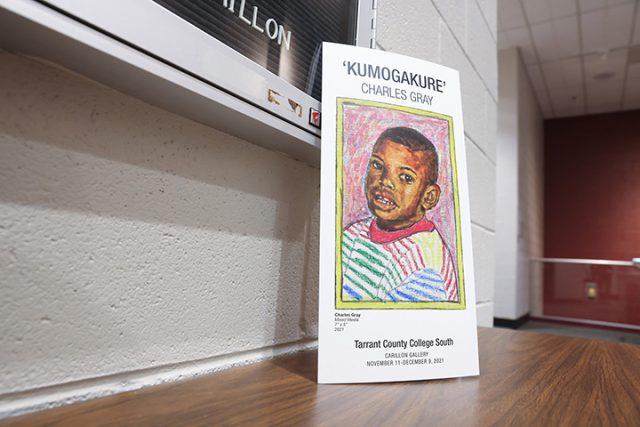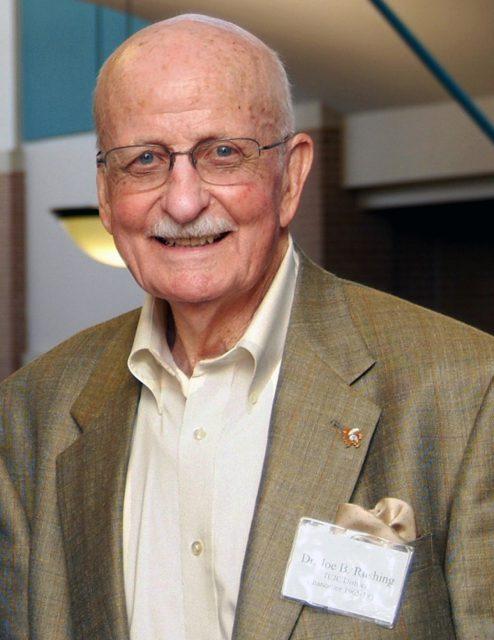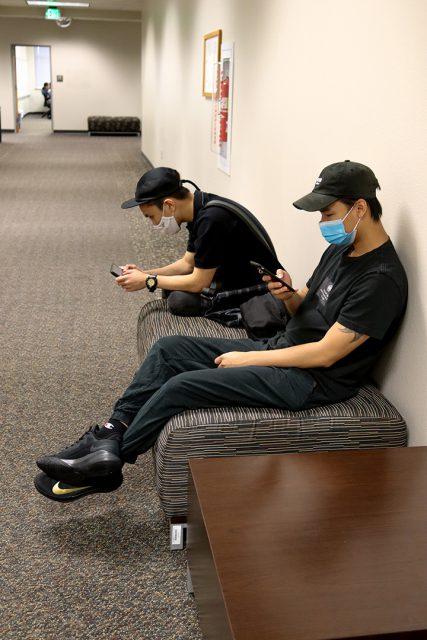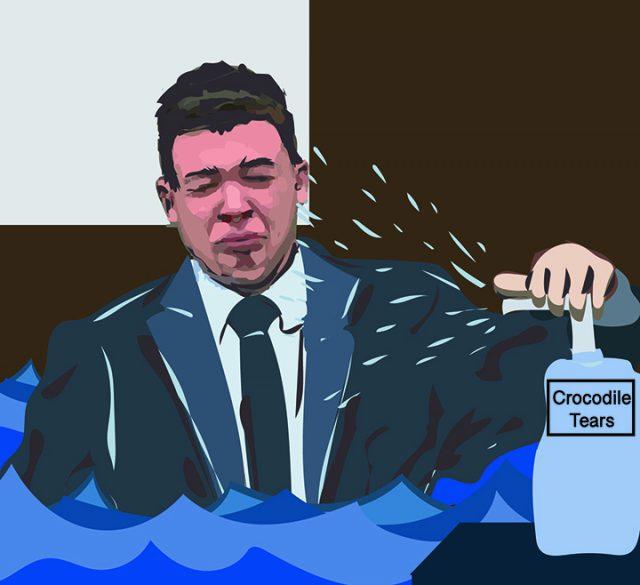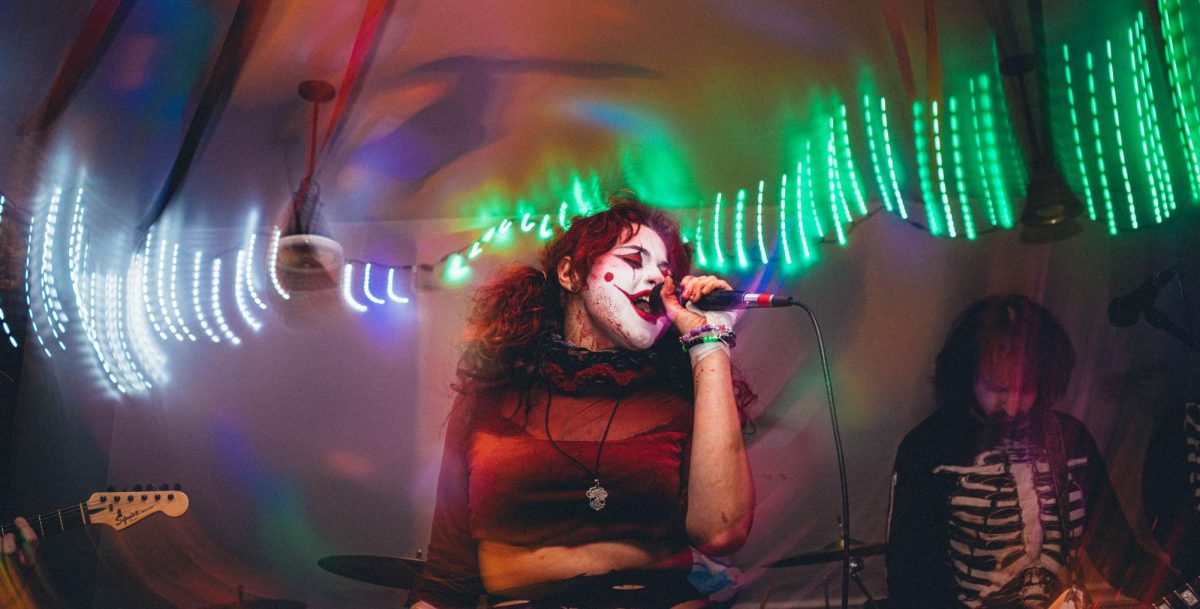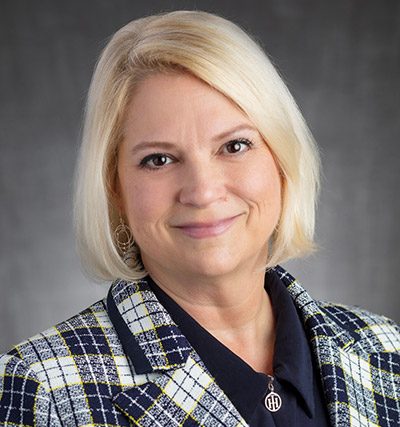Carillon Gallery fosters generations of artists
Logan Evans
managing editor
Artist Charles Gray had plenty to reflect on during the opening ceremony for his new South Campus exhibit “Kumogakure.”
On one hand, the series is an homage to his childhood, a collection of layered images mixing family portraits with classic anime characters he grew up loving. But as a TCC alum, there was also a significance in the exhibit’s location — the Carillon Gallery, which has been molding artists like Gray for decades.
“It’s very important,” Gray said of being showcased in the space where he once cut his teeth. “It’s an opportunity to have a conversation with people who were in my position, learning in a beginning stage.”
While the gallery has been a staple of South Campus since the ‘70s, it wasn’t until 2007 — the same year Gray took a printmaking class that would spark his interest in art — that it took on the life it has now. That was the year curator Joshua Goode arrived and made the decision to revamp the programming.
“They had done some rotating shows, but they weren’t putting a lot of energy into them,” Goode said. “I tried to really bring in higher profile artists both locally and internationally.”
Fourteen years later, the Carillon is a dedicated space for both professional and student artists to build relationships and showcase their work. The gallery features a flagship artist-in-residence program, through which the department recruits working artists to create side-by-side with students through the semester.

“The Withdrawing Room” was a 2017 show by instructor Erin Stafford.
Most of these artists come by way of personal connections Goode has made in his career. An active artist in his own right, Goode has made a name sculpting faux-ancient artifacts (like the 2019 piece “Bartosaurus,” a bronze figurine with the body of a dinosaur and head of Bart Simpson) and showcasing them in staged “excavations” around the world. His work is a blend of fine art, satire and performance meant to expose the malleability of history. Goode sifts through the connections he’s made in the art world for possible mentors for his students.
Apart from instilling artistic wisdom, visiting artists will often leave a physical mark on the facility itself. Directly across from the gallery space hangs a thin, wiry sculpture made by a Rhode Island-based artist and South students using facility laser cutters several years ago.
Goode said that because artists don’t have to worry about selling pieces or professional reputation at the Carillon, there’s ample room for experimentation within the gallery space.

TCC alum Charles Gray opened his new show Nov. 11 at South Campus gallery.
“People take a risk and you get to see something pretty exciting sometime,” he said.
TR art instructor Erin Stafford began her time at TCC with a residency at the Carillon. She would later showcase her solo show “The Withdrawing Room” at the space in 2017, an exhibit featuring dollhouse-like furniture painted directly onto the gallery walls.
Stafford remembers the effort she put into making her vision a reality.
“When I think about that show, I think about my knees being in pain,” she said. “There was so much work to do, getting up and down a ladder. But I was very happy with the way it turned out.”
Stafford teaches her students the benefits of consuming artwork in-person, something that has been dwindled over the pandemic but looks to be making a comeback.
“I show a lot of digital images in class, but the scale is lost,” she said. “That’s something that can’t translate to the classroom or social media. You always miss texture or detail.”
While the gallery has an active Instagram page complete with exclusive virtual exhibits and online guest curators, Goode stresses that visiting an in-person show gives students the best idea of how the art they consume was created. He points to the current “Kumogakure” exhibit by Charles Gray, how seeing the materials used and the texture of the crayon strokes makes the work feel more tangible.
As Gray steps into a burgeoning art career, having just won a fellowship from the Talley Dunn gallery in Dallas, he hopes current students who view his work realize they can follow in his footsteps — especially learning in the space that shaped him.
“People walking in and seeing this have some of the same memories and experiences I had,” he said. “It’s a great way to make that kind of connection.”
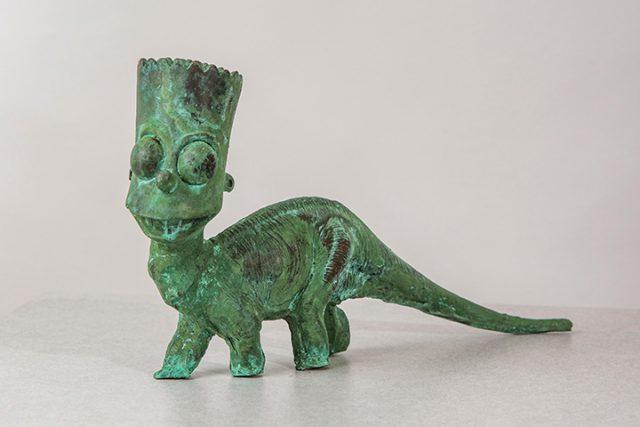
“Bartosaurus” is a 2019 piece sculpted by gallery curator Joshua Goode.
























